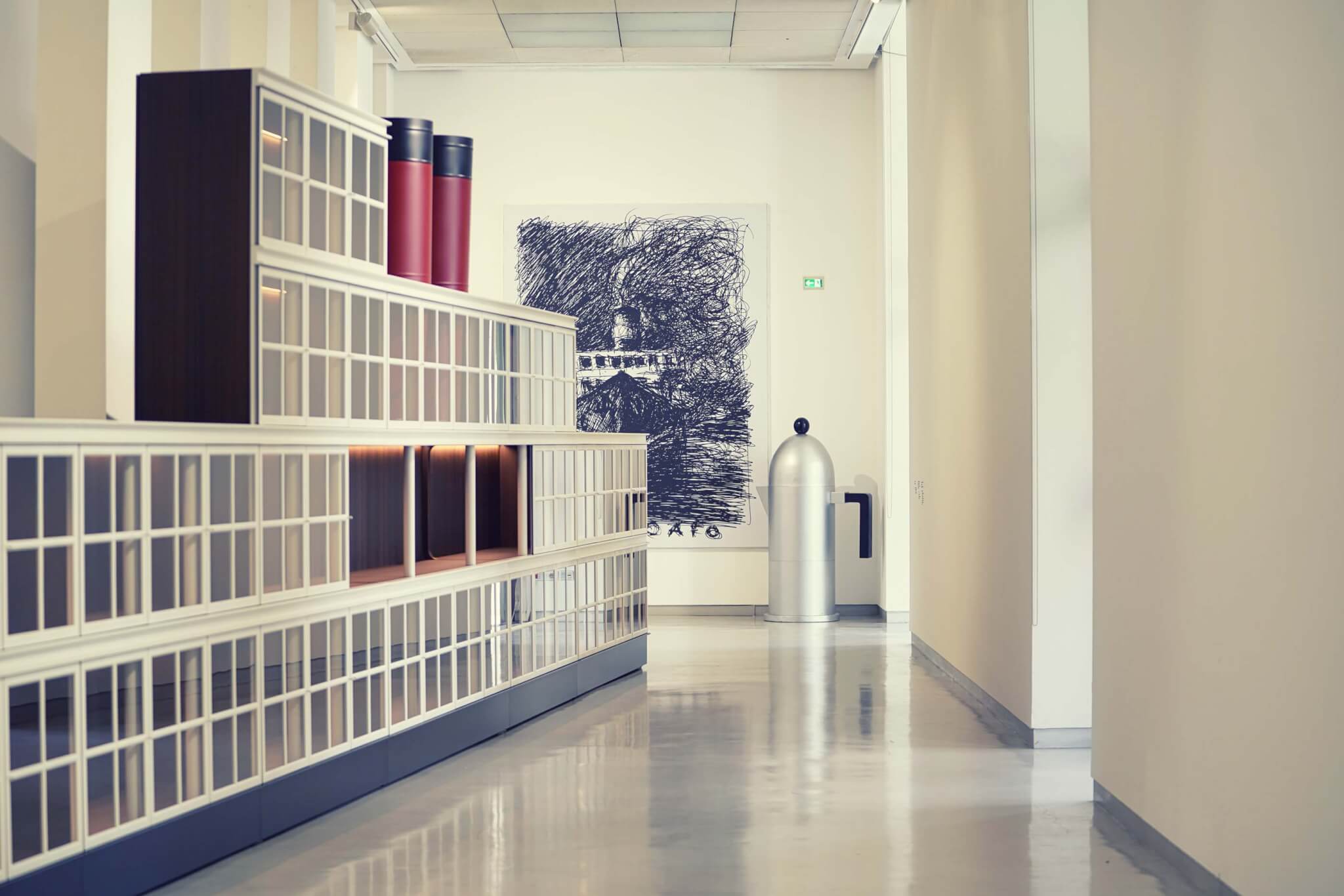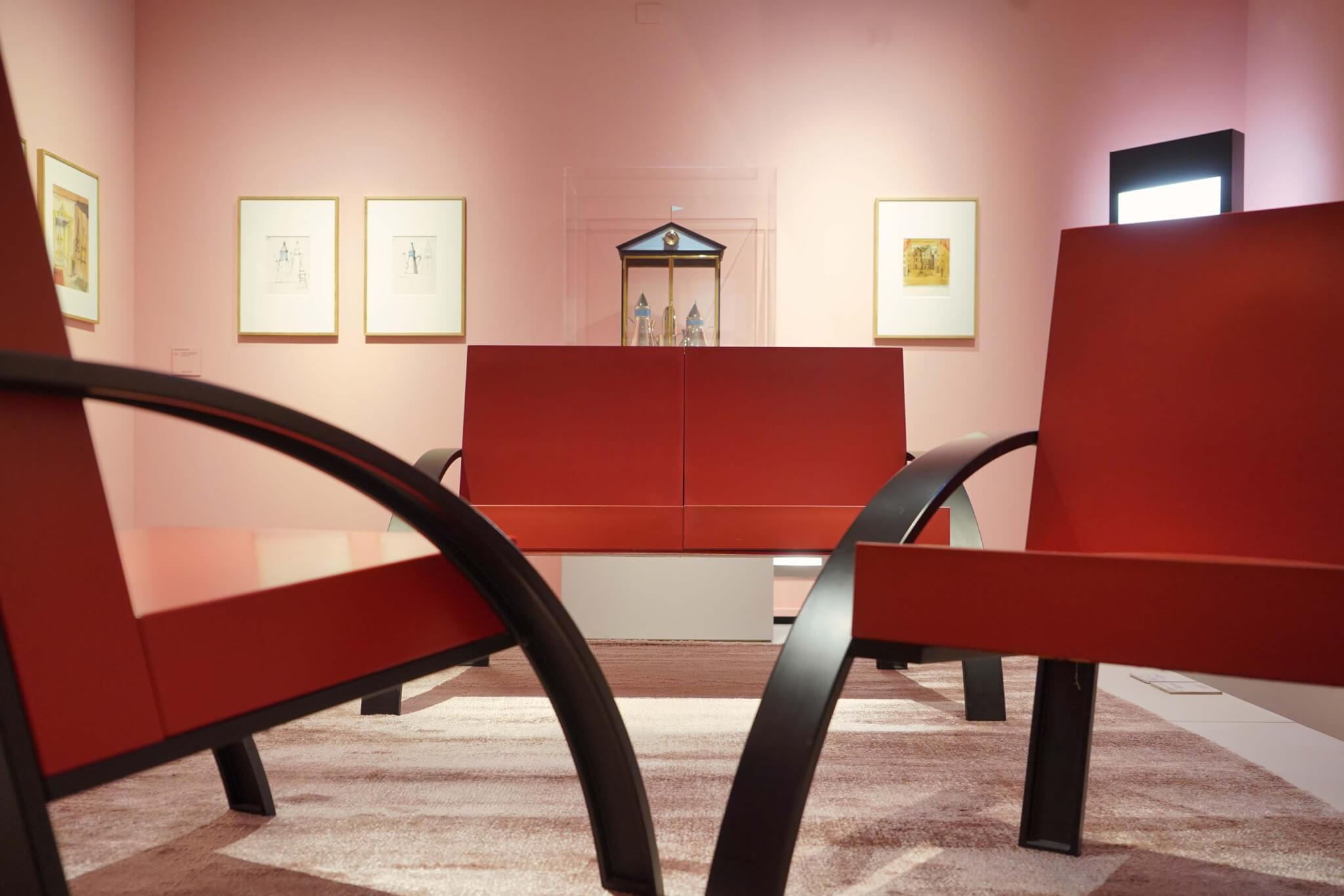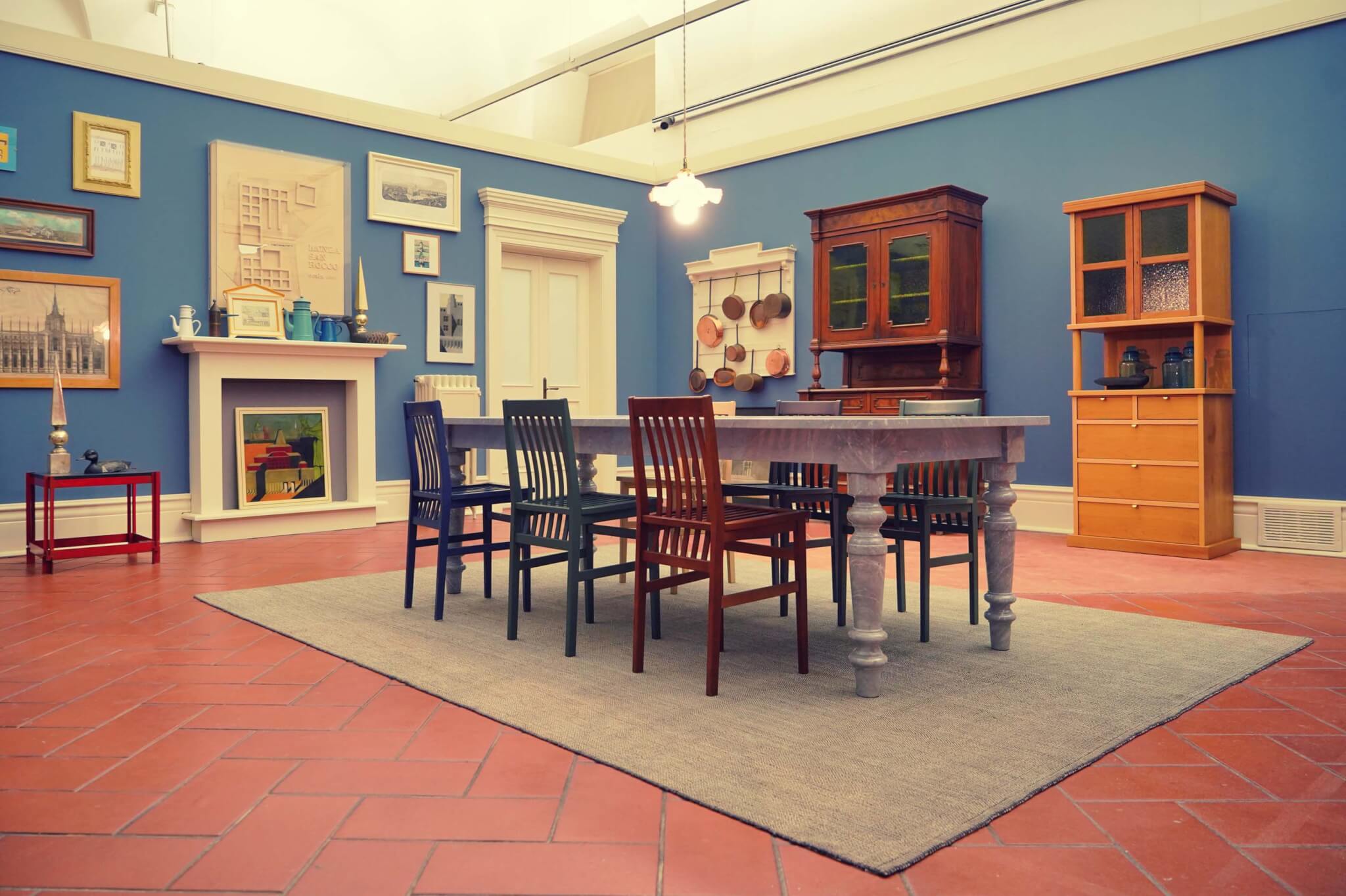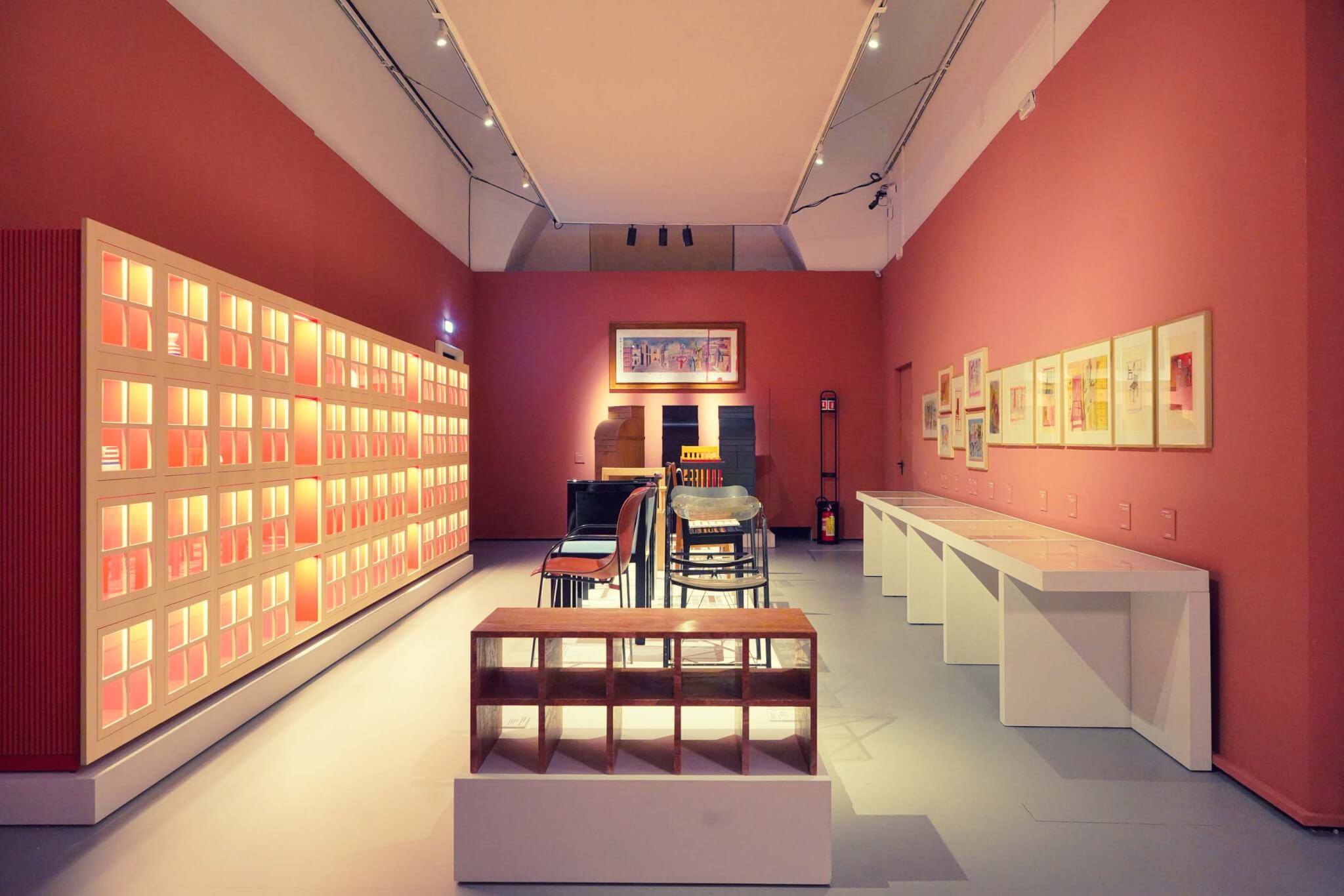Aldo Rossi. Design 1960–1997
Museo del Novocento
Milan, Italy
Open through November 6
Scale is important if you wish to design anything that’s useful: You can’t build a coffee pot as large as a Duomo and sell that at Rinascente, and you also can’t make a village the size of an espresso cup and obtain a commission from the province of Lombardy. But you can think of objects of differing sizes as similar concerns during initial stages of design. That, enthrallingly, is what Aldo Rossi did in his work, a process you can digest comprehensively at Aldo Rossi. Design 1960–1997 at the Museo del Novecento in Milan.

There have been other Rossi exhibits in recent years: Aldo Rossi and the City at Pratt in 2017, Aldo Rossi: The Architecture and Art of the Analogous City, at the Princeton University School of Architecture in 2018, and Aldo Rossi. The Architect and the Cities at MAXXI in Rome in 2021. But while these shows focused on architecture and the city, Design stages a wider understanding of Rossi’s work.
Curated by Chiara Spangaro in partnership with Fondazione Aldo Rossi and Silvana Editoriale and designed by Morris Adjmi, Aldo Rossi. Design 1960-1997 presents over 350 objects offering an excellent immersion into Rossi’s design processes and a skilled homage to his craft.
The exhibit follows time vaguely, but thematics more closely. Curator Spangaro explained: “The chronology has been subverted so as to display nine very different groupings of work: his icons and their prototypes; an ideal room and his personal space; the architect’s research on solid figures, and the resonance of his architecture into his objects and furniture he designed for his buildings. The idea is to be immersed into Rossi’s creative, magic, and playful world while perceiving the complexity and connections of it.”

Design starts small before growing in size. You’ll find design sketches next to objects at any exhibit, but generally not drawings of percolators the size of palazzi, or clustered in living rooms at the size of party guests. Cabanas hang out on the beach in sketches, they don’t just line up in rows. Morris Adjmi told AN that “a lot of Rossi’s sketches look like buildings, but they’re actually objects and vice-versa; he’s blurring the lines between object and architecture using drawings, paintings, and sketches to render those things scaleness and imbue them with anthropomorphic qualities.”
There is an active Alice in Wonderland quality to the exhibit, which originates from Rossi’s pieces. After all, he designed a service literally called the Coffee and Tea Piazza for Alessi. The fanciful, imaginative feeling continues in other objects such as such as his Il Faro ceramics line for Rosenthal, another coffee service modeled on lighthouses, and from the sketches in which designed objects appear as large or small as anything can on paper.
This all might seem fanciful, but it presents a coherent vision of Rossi’s actual thinking about design, not just reveries of Lilliput and Brobdingnag. Rossi wrote in L’officina Alessi, Alberto Alessi e Alessandro Mendini: dieci anni di progetto 1980-1990, published in 1989, “In this sense, by another route, I collided with the Functionalist and narrow idea of design: I thought of the image, that the image of the object was as or more powerful than that of architecture; and that once again, the image contained the function.”

Adjmi testified to this common imaginative source of all of Rossi’s work: “Perhaps he could be thought of as a Renaissance personality as he was multimodal and worked with multiple media and in multiple disciplines, but I don’t think he really separated any of those works—they all sort of coexisted.”
For Rossi, the design of domestic objects was not a sidetrack from architecture or theorizing—it was the same track. He wrote that he was “attracted to domestic objects: coffeepots, tea kettles, dishes, and clocks and lamps constituted a kind of abandoned house of childhood or senility, a time never present in which things were built to last forever.” Rossi’s Neorationalism always had an emotional quality, but this sentiment is particularly stressed here. Design’s wall text quotes Rossi calling furniture “objects of affection,” obviously some distance from the Corbusier-influenced invocation that “an armchair is a machine for sitting in.”
There’s obviously some humor in Rossi’s borrowings, but the reliable effect is to elevate domestic objects, not to demean larger ones. A French press wrapped in column-like fluting radiates dignity, not a joke about columns. Coffeepots that resemble medieval bascinets aren’t Renaissance Fair kitsch but evocative and intriguing: Imagine Calvino’s nonexistent knight appearing well-caffeinated on your table.

However dismissive Rossi might have been of the idea of Functionalism as an adequate locus for design, objects obviously must work, and it’s reliably fascinating to witness practically minded evolutions of objects across sketches and prototypes. Watches are especially intriguing to observe. Adjmi recalled Rossi holding a simple washer up to a watch face as a eureka moment on a path to iconic simplicity.
Adjmi’s exhibition design heightens the appreciation of the artifacts on view. His aim was to “reinforce this idea of axes and connections” integral to Rossi’s work. Objects are invariably framed ahead, with intriguing corners; even door surrounds were altered to comport with the design vision.
Wall colors are drawn directly from Rossi’s playbook. Adjmi had wanted to use an assortment of blues for the walls but this proved too similar to a Mario Sironi exhibit upstairs. He opted for a sequence of pinks, also a Rossi favorite, one he recalled from many visits to his mentor’s house on Lake Maggiore. “The concept was to start with this very pale pink and then get darker and darker towards almost like a terra-cotta color, which recalls that Cimitero cube,” Adjmi said, referencing Rossi’s San Cataldo Cemetery.
One gallery provides a sense of Rossi’s homelife, intermingling his furniture (one a table modeled on his grandfather’s) with older pieces and Luigi Ghirri photos of Rossi’s domestic spaces, including his apartment on Via Maddalena in Milan.

“I literally wanted to recreate the feeling of being in his kitchen; before he made it his office, it was his apartment,” Adjmi explained. “It was a place that was central to his production of drawings and thinking about whatever he was making or doing. His products were influenced by his daily life but also his idea that history and contemporary life kind of coexisted.”
“It has been 25 years since Aldo died, and my experience working with him gave me a foundation I’ve tried to build on,” Adjmi recalled. “This was another way to get insight into process and his way of thinking, which transcended the silos of ‘I’m an artist’ or ‘I’m an architect’ or ‘I’m a designer.’” For Adjmi, the exercise of designing Design helped him see Rossi “as a whole person.” He continued, “It was satisfying to make a space to house all of those objects in a way that told the story about the objects, but also about the man, about the person.”
Anthony Paletta is a freelance writer in New York City. He has contributed to The Architect’s Newspaper, The Wall Street Journal, The Guardian, Metropolis, Architectural Record, CityLab, and other publications.
